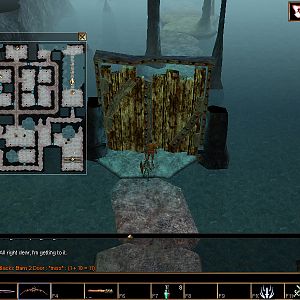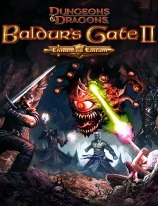-

- Forums
- Chatrooms
- Gallery
- Gameplay Videos
- Upload
- Articles
- Mod Reviews
- Shop SP: Games, Movies, Books

Chapter 1: The Whipping Boy
The boy gazed up at the castle. Its shining white marble walls were wet with the spray from the seven waterfalls that flowed on either side of it, four to the north and three to south, and glistened in the early-morning sun. Rainbows shimmered and danced around the castle walls. The peasants believed the rainbows were fine cloth spun by fairies, and more than one silly lad had gone to his death in the tumbling water trying to snag them.
The boy knew better. He knew that rainbows were not substantial, being made of nothing more than sunlight and water. Only that which exists in both the darkness and in the light is real. The boy had been taught to believe only in what was real and substantial.
The boy looked at the castle without much feeling, good or bad, nothing but a sort of uncaring fatalism that is often seen in ill-used dogs. Not that the boy had been particularly ill-used in his life, if to be ignored is not to be ill-used. He was about to leave his parents and his home and enter into a new life and by rights he should have felt sad, homesick, frightened, and trepidatious. He felt none of those: only tired, from the long walk, and uncomfortably warm and itchy in his new woolen stockings.
He and his father stood before the gate set in a high outer wall. Beyond the gate was a courtyard and beyond the courtyard myriad steps leading up into the castle, which had been built against a cliff. The castle looked out to the west, gazing out over Lake Ildurel, its back planted solidly against the rocks to the east. Its very topmost turrets were level with the River Hammerclaw, which flowed from east to west and whose rushing water, tumbling over the cliff face, created the rainbows.
The castle walls were white marble--the boy had once seen a representation of the castle at a feast, made of sugar lumps--and it was several stories tall. How many stories the boy could not count because the castle roamed all over the cliff face. So many turrets jutted off every which way, so many battlements slanted off in such different directions, and so many small lead-paned glass windows winked in the sunlight that the sight confused him. He had wanted to play with the sugar castle, and his mother had told him he might, but the next morning he found it had been eaten by mice.
The boy gazed, awed, at this castle, which was not made of sugar and not likely to be eaten by mice or even dragons. One wing of the castle caught his eye. This was a wing to the east, overlooking the four waterfalls. Atop it was a turret larger than all the rest, with a balcony that stretched around it. That was the King's Walk, said his father. King Tamaros, blessed of the gods, was the only person permitted to walk that balcony.
The King must be able to see the whole world from there, the boy thought. Or if not the whole world, then at least the entire great city of Vinnengael. The boy could practically see the whole city himself, just standing on the palace steps.
Vinnengael was built on three levels, the lowest level being even with the lake, which stretched to the horizon, its distant shore just barely visible from the King's Walk. The second level of the city was built atop a cliff that rose up from the first level. The third level was built atop another cliff, which rose from the second. The palace stood on the third level. Across from the palace, behind the boy and across a vast marble courtyard, was the Temple of the Magi.
Temple and palace, the heart of the kingdom and its head, were the only two major structures standing on the third level. Soldiers' barracks occupied the north; the barracks were attached to the palace. To the south, built on a jutting rock groin, were the elegant houses of the foreign ambassadors.
The men-at-arms guarding the outer gate gave the boy's father a bored glance as the two of them passed through. The boy craned his neck to gaze up at the huge portcullis, with its rows of grim teeth. He would have liked to stop, hoping to see some blood, for he was well acquainted with the tale of Nathan of Neyshabur, one of the heroes of Vinnengael, who had ordered the portcullis to be lowered though he himself was standing beneath it, fending off the kingdom's enemies, refusing to give ground though the wicked teeth thundered down upon him. Nathan of Neyshabur had lived and died several hundred years ago, when the city and the castle, but not the rainbows,were young. It was therefore unlikely that his blood would still be dripping from the portcullis, but the boy felt disappointed, nonetheless.
His father yanked at the boy's mantle and demanded to know what he thought he was doing, gawking like an ork during festival time, and hustled the boy along.
They walked across a vast courtyard and entered the castle proper, where the boy was immediately lost. His father knew the way well, however, being one of the King's courtiers, and he led the boy up marble stairs and down marble halls and around marble statues and past marble columns until they reached an antechamber, where the father shoved the boy down onto a carved wood chair and summoned a servant.
The boy gazed
at the high ceilings, stained with soot from the winter fires, and at
the wall opposite, where hung a tapestry that depicted long-bodied, long-snouted,
long-eared dogs that resembled no known dog then living and people all
turned sideways hunting a stag which, by its expression, appeared to be
enjoying it all immensely though it had six arrows in it.


